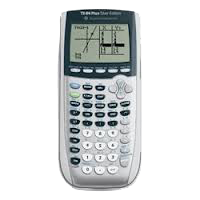
The Correct Way to Take the SAT for an 800 in Math
Today we will be discussing the correct way to take the SAT to get an 800 in math.
VERY IMPORTANT: This information is only for students that want to break a 700 in SAT math. If you are currently scoring less than 650 on practice tests, then this information is not for you. In fact, following this information may actually decrease your SAT math score. You should come back to this article only after you begin getting at least a 650 in math on practice SATs.
If you are scoring under 650, but at least 500 in SAT math, then go to this page instead: The Correct Way to Take the SAT to Maximize Your Improvement in Math
If you are scoring under 500 in SAT math, then go to this page: The Correct Way to Take SAT Math to Maximize Your Score
Now, for those of you that are getting at least a 650 on practice tests, it is very important that you follow the advice here every time you take a practice test. The system I will be giving is simple, but nonetheless you will need to apply it a few times to become comfortable with it before test day. You should take at least four practice SATs before taking your actual SAT, approximately one practice test per month.
 Pacing: On average, you have about one minute and fifteen seconds per question. If you have been preparing properly, then this is more than enough time. You should not need more than 30 seconds per question on average for the easy SAT math questions, 60 seconds for the medium SAT math questions, and 75 seconds for the hard SAT math questions.
Pacing: On average, you have about one minute and fifteen seconds per question. If you have been preparing properly, then this is more than enough time. You should not need more than 30 seconds per question on average for the easy SAT math questions, 60 seconds for the medium SAT math questions, and 75 seconds for the hard SAT math questions.
Let’s look at the 25 minute section where a calculator is not allowed in detail. This section has 15 multiple choice questions and 5 grid ins. In this case, roughly speaking we have that numbers 1 through 5 are easy, 6 through 10 are medium, and 11 through 15 are hard. Also numbers 16 and 17 are easy, 18 is medium, and 19 and 20 are hard. So you might need 3 and a half minutes for the easy questions, 6 minutes for the medium questions, and about 8 and a half minutes for the hard questions. This will leave you about 7 minutes to check over your answers, and spend more time on that one question that is giving you a bit of trouble.
Let me just mention that I am actually being very generous here. I can finish any 20 question section in about 8 minutes WITHOUT rushing. This leaves me 17 minutes to spare to go back and catch any careless errors. There is nothing special about me that allows me to do this. When I take the test, I simply apply the same strategies that I teach to every one of my students. If you know these strategies, you will find that on many of the hard questions you may actually need less time than you need on some of the easy questions. Since I realize that many students find it hard to believe that an SAT math section can be completed so quickly I have included the following videos of me backing up these claims. Those of you that have learned from any of my GET 800 prep books should be able to follow everything I am doing here.
Note: The following videos are for the old SAT, but you should still find it useful to observe the time saving strategies that I use here.
Click Play In Each Video Below To See How Each Math Section From Test 1 Of The College Board’s Official Study Guide Can Be Completed Correctly In About 8 Or 9 Minutes!
Now, how should you pace yourself properly so that you do not run out of time prematurely? Well after spending about 30 seconds on ANY question, you should decide if you understand the question enough to finish it fairly quickly. If not, then mark it off and move on. Do not worry – it is not forgotten – you will come back to it later.
The worst thing that you can do is to get hung up on one question.
If you have eliminated at least one answer choice, or it is a grid in question, feel free to take a guess. But you should still mark it off and come back to it later.
Make sure that you are using your calculator when appropriate (on the section where it is allowed). But be aware that your calculator can slow you down if it is overused.
Remember that the last few multiple choice questions in each section are hard, whereas the first few grid in questions are easy. So, you may want to temporarily skip over the last few multiple choice questions, and go back to them a bit later.
Now, after going through the section once, you can then go through each of the questions you have marked off and solve as many of them as you can. You should be able to spend a few minutes on this, and still have several minutes left to check your answers. If there are one or two problems that you just cannot seem to get, let them go for a while. You can come back to them intermittently as you are checking over other answers.
The correct way to check over your answers: So you have answered all the questions, and you still have some time left. What is the best way to check your answers?
DO NOT simply look over your work. Start the test over and redo each question from the beginning without looking at your prior work. Ideally you should try to use a different method than you used the first time.
If you picked numbers the first time, then at least pick new numbers. If you cannot think of a different way to solve it, that’s okay. Just do it again. Then compare your two answers. If they are the same, move on. If not, then take a little time to catch your careless mistake.
Summary:
(1) When taking your SAT make sure you pace yourself properly.
(2) Be aware of when you have spent about 30 seconds on any problem.
(3) “Check” over your answers the right way.
Use this method on at least four practice tests before you take the real SAT. This way you will be very comfortable when you take the actual exam. Pacing yourself properly will give you plenty of time to check your work and ensure that you get a perfect 800 or near perfect score. Now this system only works if you have been preparing for the test properly. You may want to take a look at the Advanced Course from my 28 SAT Math Lessons series for this purpose. The Advanced Course is targeted specifically for students currently scoring more than 600 in SAT math. Here you will learn all of the advanced techniques you need to get an 800 on test day. In addition there are well over 300 problems, most of which are Level 4 and 5 – exactly the types of problems you need to practice to break that 750 barrier. Click on the picture below for more information about this book.
Best of luck,

Dr. Steve
Get 800
P.S.: Here is a special offer on all of my SAT math prep books: SAT Math Prep Books Full Bundle



